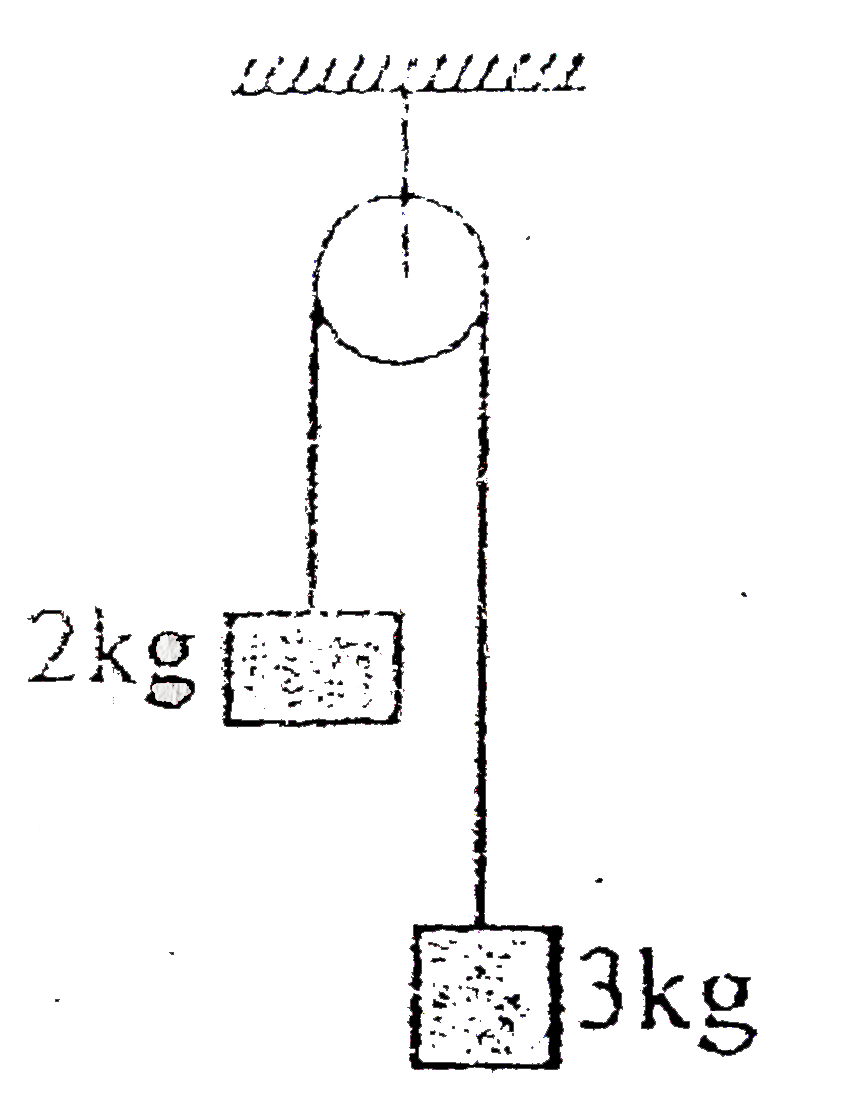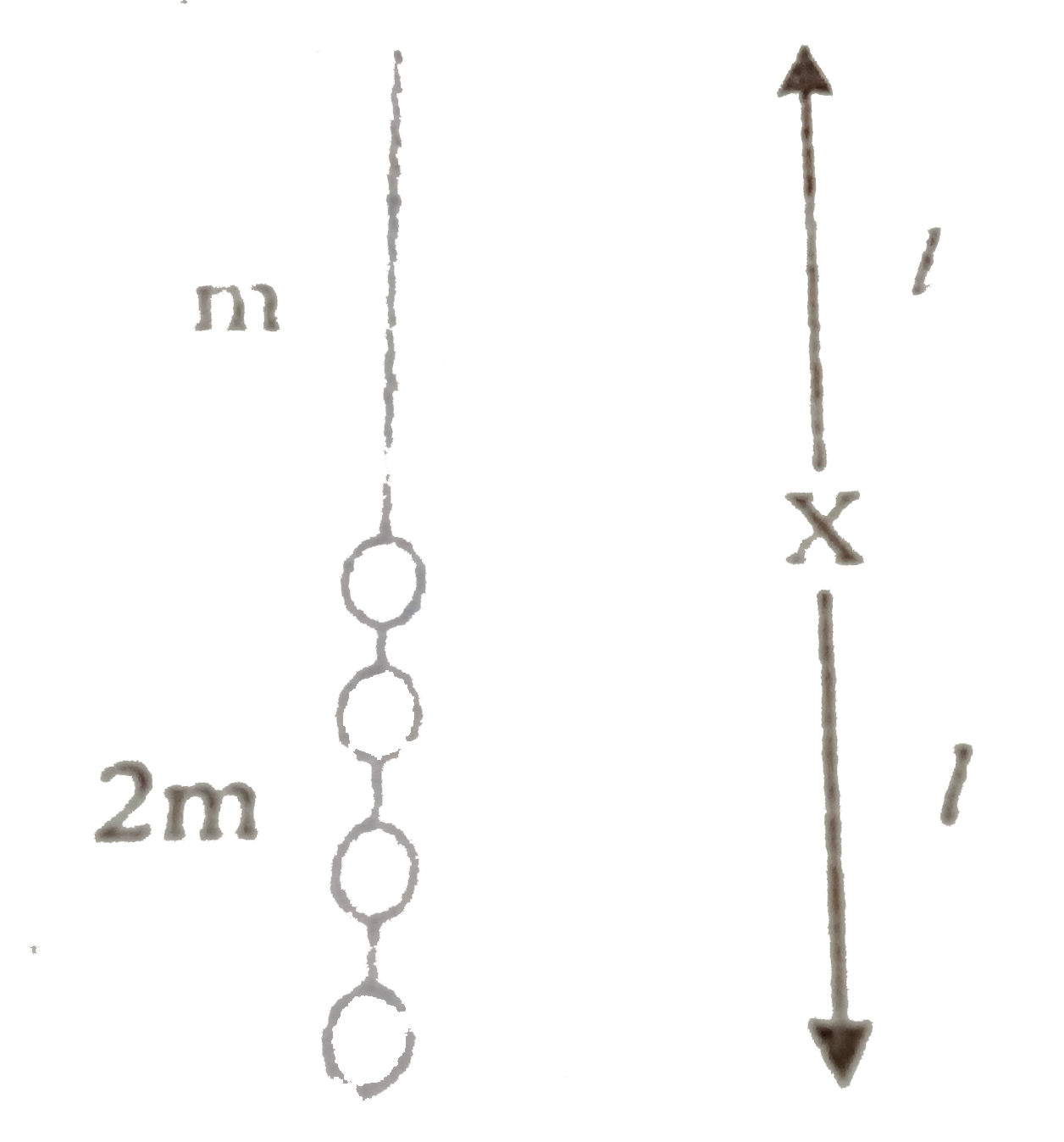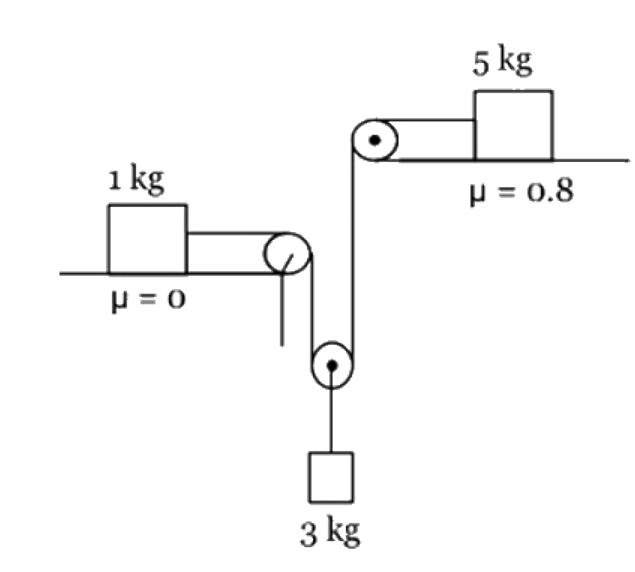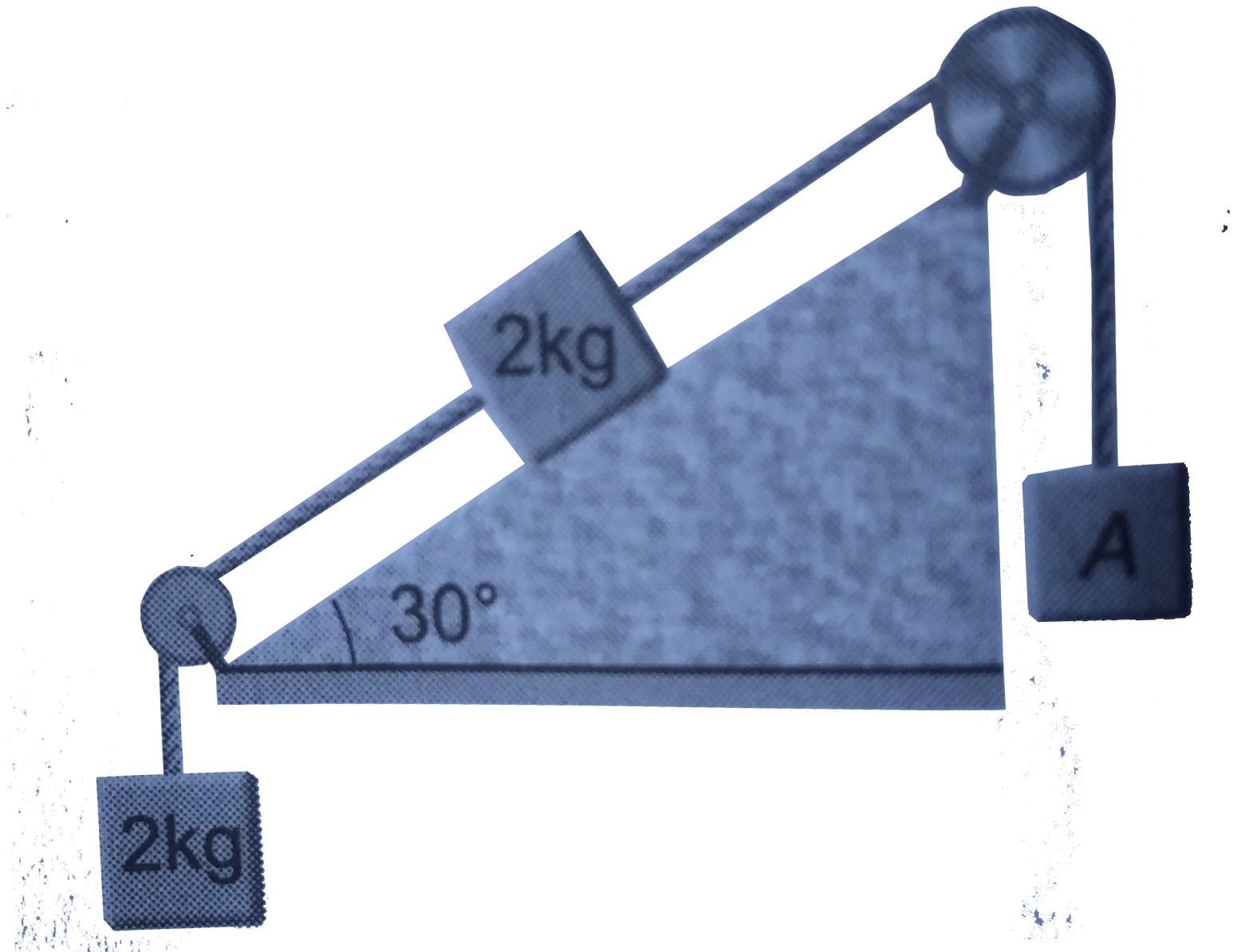In the ideal atwood machine arrangement shown, what is the change in kinetic energy of the system in 1√2second of their motion starting from rest ?

1J
2J
4J
5J
The correct Answer is:D
Acceleration=3g−2g5=2m/s2 so
v=2×1√2=√2m/s
∴ΔE=12(2)(√2)2+12(3)(√2)2=5
Topper's Solved these Questions
- TEST PAPERBOOK - ALLENCHAPTER - TEST PAPEREXERCISE - PHYSICS
4 Videos
- TEST PAPERBOOK - ALLENCHAPTER - TEST PAPEREXERCISE - PHYSICS
4 Videos
- SIMPLE HARMONIC MOTIONBOOK - ALLENCHAPTER - SIMPLE HARMONIC MOTIONEXERCISE - Example
1 Videos
- TEST PAPER 1BOOK - ALLENCHAPTER - TEST PAPER 1EXERCISE - PHYSICS
11 Videos
Similar Questions
A rope of length l and mass 'm' is connected to a chain of length l and mass 2m and hung vertically as shown. What is the change in graviational potential energy if the system is inverted and hung from same point.
 .
.
View SolutionStatement−1: The work done by all forces on a system equals to the change in kinetic energy of that system . This statement is true even if nonconservative forces act on the system.
Statement −2: The total work done by internal forces may be positive.
View Solution
Knowledge Check
An electron and a proton are moving under the influence of mutual forces. In calculating the change in the kinetic energy of the system during motion, one ignores the magnetic force of one on another. This is because,
Athe two magnetic forces are equal and opposite so they produce no net effect.Bthe magnetic forces do no work on each particleCthe magnetic forces do equal and opposite (but non-zero) work on each particle.Dthe magnetic forces are necessarily negligible.In the question number 66, if wheel starts from rest, what is the kinetic energy of the wheel when 2 m of the cord is unwound?
A20 JB25 JC45 JD50 J
An electron and a proton are moving under the influence of mutual forces. In calculating the change in the kinetic energy of the system during motion, one ignores the magnetic force of one on another. This is because,
View SolutionThe acceleration of 3 kg block in the arrangement shown in the diagram ,when the given system is released from rest is

View SolutionThe heavier block in an atwood machine has a mass twice that of the lighter one. The tension in the string is 16.0 N when the system is set into motion. Find the decrease in the gravitational potential energy during the first second after the system is released from rest.
View SolutionIn the balance machine shown in the figures. Which arm will move downward after the system is released from rest (assuming stiring, arm of balance machie and the pulley to be light)

View SolutionA small steel sphere of mass m and radius r rolls without slipping on the fiictionless surface of a large hemisphere of radius R{R>>r) whose axis of symmetry is vertical. It starts at the top from the rest,
(a) What is the kinetic energy at the bottom ?
(b) What fraction is the rotational kinetic energy of the total kinetic energy ?
(c) What fraction is the rotational kinetic energy of the total kinetic energy?
(d) What fraction is the translational kinetic energy of the total kinetic energy?
View SolutionIn the arrangement shown in figure what should be the mass of block A, so that the system remains at rest ? Neglect friction and mass of string.

View Solution
